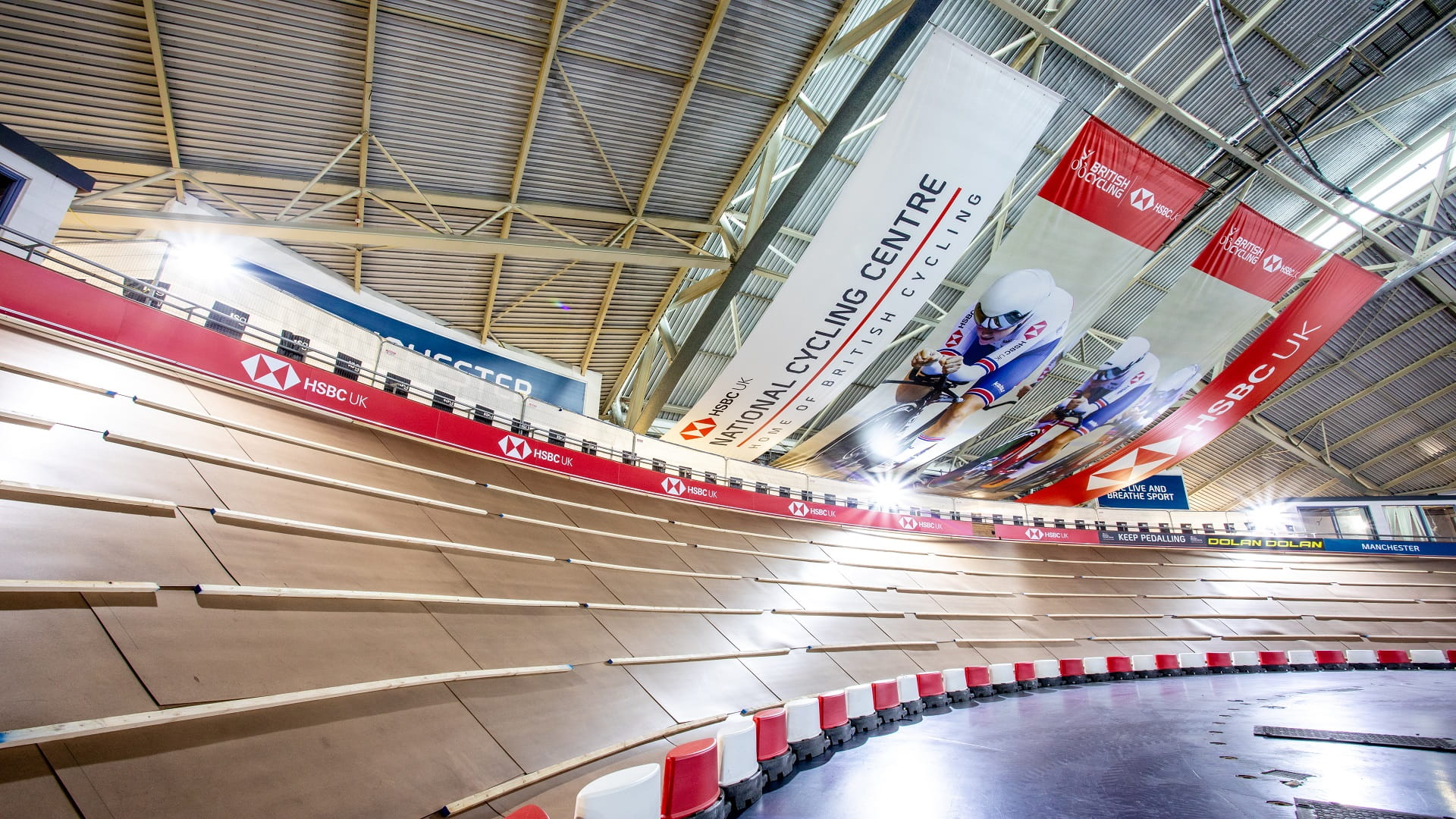
Britain's sustainable cycling future on track
In response to Manchester City Council’s decarbonisation plans, which are looking to achieve full carbon neutrality by 2038, full scale modernisation and operational performance works are being undertaken on one of the world’s busiest velodromes. The £21 million programme will upgrade facilities with the latest state-of-the-art equipment, futureproofing it for generations to come. However, what steps are being taken to ensure carbon reducing methods are being used at every step of its journey and what measures are being put in place to futureproof its facilities for the long haul?
First and foremost, collaboration is key and working under one of the UK’s best performing regional public sector procurement frameworks, the North West Construction Hub, sets it off on the right foot. Being delivered in partnership with Manchester City Council, MCRActive, operator GLL, British Cycling and a range of other stakeholders guarantees alignment and ensures everyone is working towards one harmonised goal: future-proofing the velodrome through the modernisation of its building services.

Operational carbon
The velodrome’s pre-existing ventilation system and plant infrastructure did not support its sustainable performance in alignment with Manchester City Council’s decarbonisation goals, running a high operational carbon footprint. Therefore, major upgrades were needed to increase the building’s operational efficiency, reduce running costs and mitigate the building’s environmental impact through the significant reduction of carbon emissions.
As a result of these efficiency measures and interventions the RIBA Stage 4 estimated energy savings indicate a reduction in gas and electricity consumption from circa 831 tCO2 down to 314 tCO2 pa. Through these reductions we estimate that the velodrome will save somewhere in the region of 517 tCO2 per year.
In order to achieve this, a fundamental element of this redevelopment is the creation of a whole new energy centre. Powering the velodrome’s low carbon future, it will be equipped with Air Source Heat Pumps to decarbonise its use of electricity. Furthermore, the system design will allow full flexibility for future technologies to be incorporated – e.g., district heat networks or hydrogen boilers – ensuring the latest in decarbonisation equipment can be easily updated to maintain its sustainable operation for years to come.
Embodied carbon
Outside of the measures in place to ensure its operational efficiency, sustainable methods are being implemented at every stage of the process and leading the way for future projects. In the case of the former 24 cubic yards of beechwood sports court in the centre of the track, an estimated 2.5 tonnes (CO2 equivalent) are set to be saved through its reuse, in partnership with Community Wood Recycling and local volunteering group Emerge. Furthermore, 5.1 tonnes have been rescued from the waste stream, resulting in 100% of material being recycled, 30% more than the national average which sits at 70% for waste timber. Repurposed for the community through DIY and building projects or made into a wider range of products from bird boxes to dining tables, all the wood from the former sports court has been successfully pushed up the waste hierarchy.
When faced with the former gym floor, which was constructed using a rubber crumb (similar to the type seen in a children’s playground), posed an additional challenge to ensure its sustainable deconstruction. Due to the use of mixed materials to create the necessary constitution, its sustainable repurposing is not a straightforward task. Undergoing its own process to identify the rubber’s composition, it was then shredded and re-crumbed into an equine flooring product, resulting in 5.5 tonnes of the velodrome’s gym floor being saved and repurposed.
As part of these flooring works ensuring the materials unaffected by the redevelopment works, such as flooring and walls, remain undamaged is hugely important. As such, the use of floor, wall and door protection equipment is necessary but can also result in its own sustainability challenges. In order to tackle this, Protec were recruited. Offering a sustainable material protection solution, all floor protection materials have been taken back by Protec for use on other projects, ensuring limited waste and feeding back into the circular economy. Furthermore, MEP services are often a key element in any roadmap to a circular economy and the velodrome is no exception. The LED lights used for the old track, while not fit for purpose for the new design, were still in good condition and resulted in the reuse of 25 fixtures for the state-of-the-art BMX centre.
Carbon reduction is at the heart of the velodrome’s redevelopment, with innovative processes being implemented from start to finish, adding true value to the community at every step. In fact, it is when looking outside of these pure sustainable practices that we see another element that sets this project apart; the steps being taken to engage the wider community. Offering upskilling opportunities across the board with inclusive education and training programmes, such as apprenticeship schemes and funding NVQ level 2 qualifications in collaboration with North West Skills Academy, to the full integration in local volunteering ventures – including monthly food bank donations. The velodrome is paving the way and taking advantage of every opportunity to be a force for good and drive the positive change by impacting the wider community, both through its sustainability efforts and societal approach.

